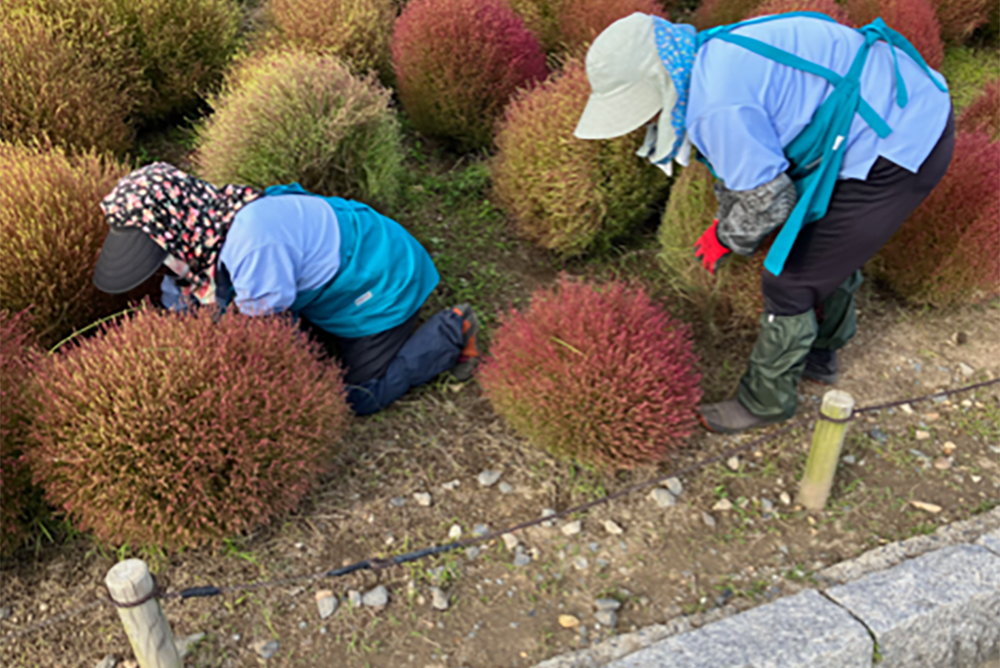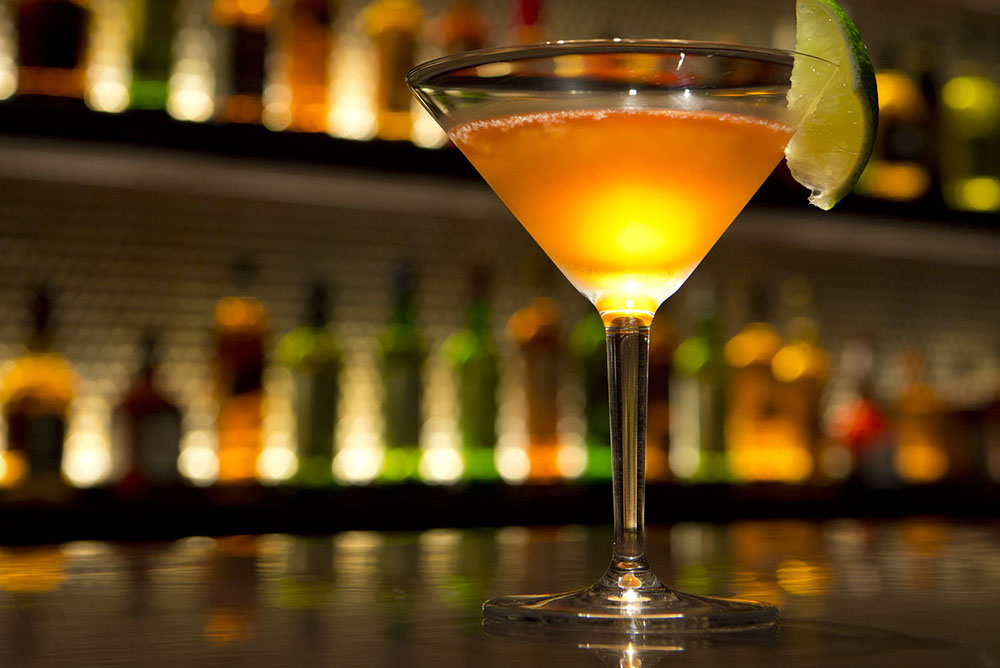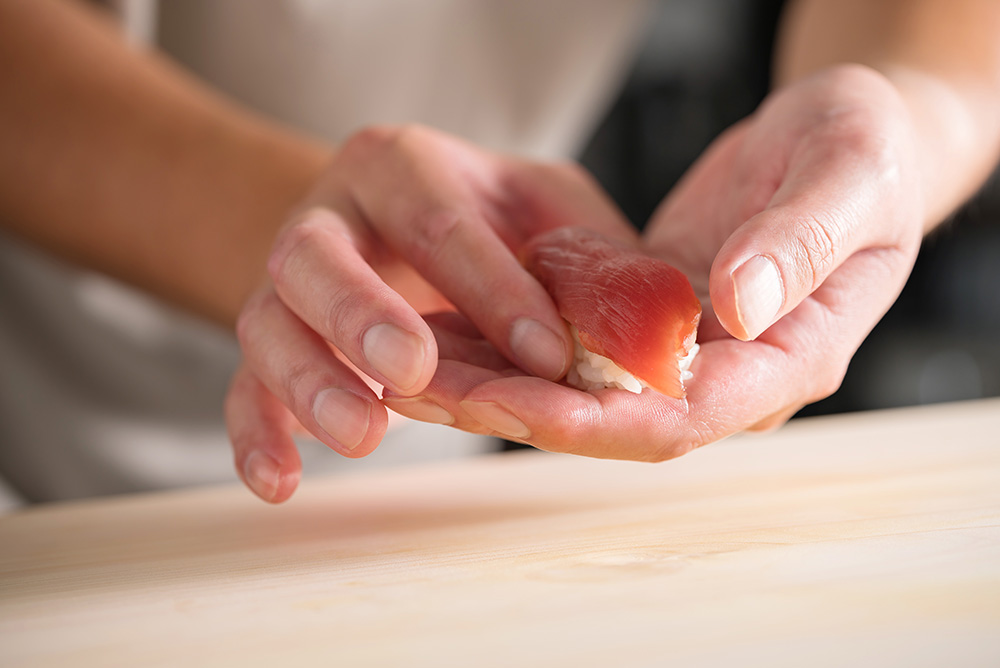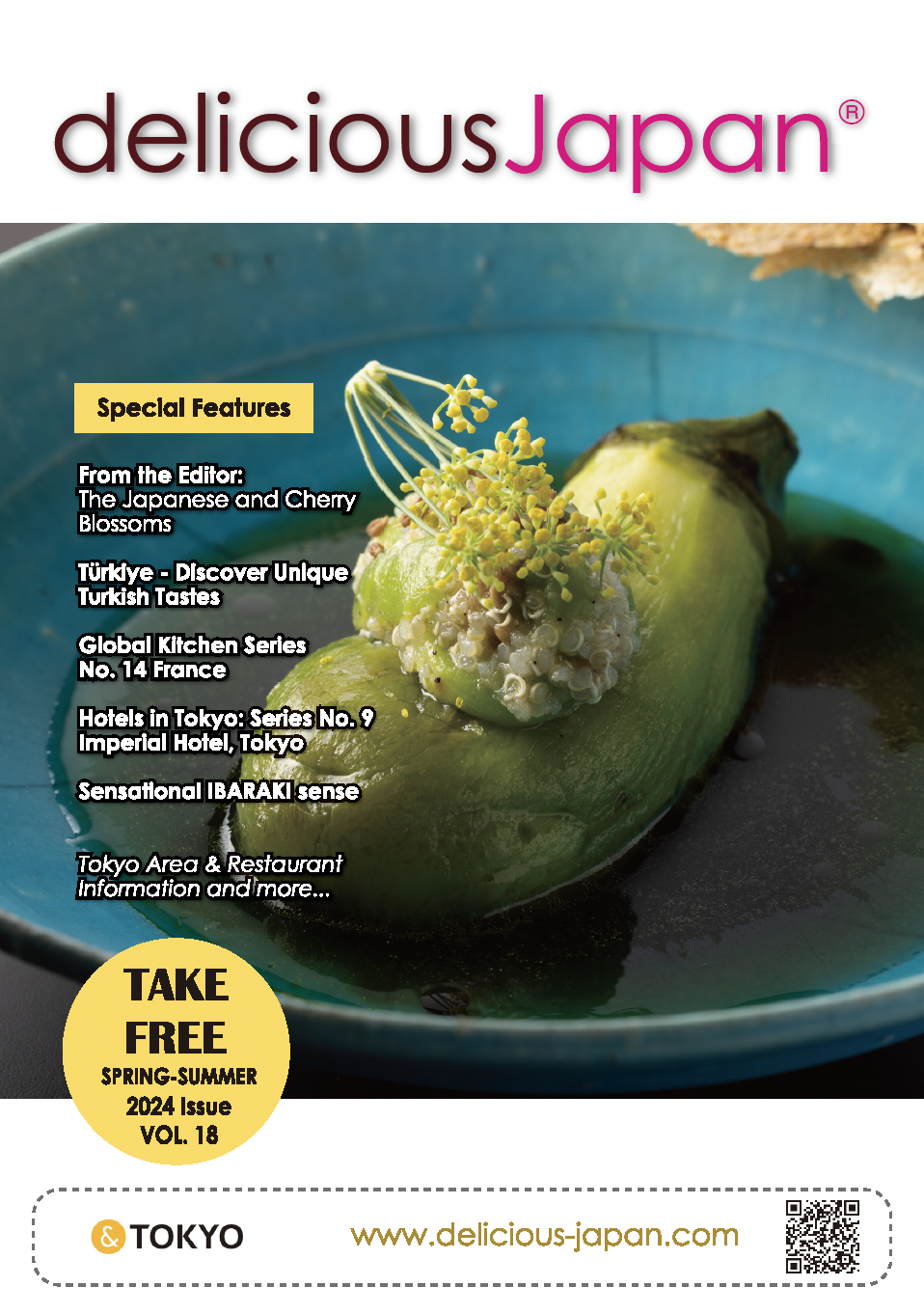
Ramen -Flavor of Japan, Skills of Japan- vol.2
Ramen, which crossed over to Japan from China, is now enjoying a boom in popularity as a Japanese national food, highly regarded by gourmets around the world. We will start by talking to Mr. Hongguang Piao, the popular Chinese manager of a Setagaya Ramen Haneda Airport branch about how he sees the appeal of ramen, and then hear from Tsukasa Maejima, CEO of the Setagaya Group and the man known as “Mr. Ramen”, about overseas strategy.
Interview with Hongguang Piao, Chef & Manager
Hongguang Piao, Chef & Manager
How did you first encounter Japanese ramen?
China is the birthplace of ramen, but Chinese ramen and Japanese ramen are fundamentally different. Chinese ramen is food for the masses, to fill them up, while Japanese ramen has evolved in its own way in Japan. The serving is visually appealing and the price is high. In China there is a Japanese ramen chain called Ajisen, and I’ve eaten there. But Ajisen’s fl avor is localized for Chinese tastes and I just saw it as “it’s something like this”. When I came to Japan and started working in a ramen restaurant, I was shocked to see for the fi rst time how much time is lavished on making the ramen.
What is the biggest difference from Chinese ramen?
The biggest difference is the soup. In China, ramen soup is flavored from the start.Ramen soup in Japan is blended individually for every bowl, from stock, sauce, and oil. Another characteristic of Japanese ramen is the care taken over the origin and manufacturing methods of the ingredients. Even the soy sauce has countless varieties. I was attracted by that kind of care.
I gather you’ve also worked at other ramen restaurants. What is the appeal of Setagaya, in your eyes?
It’s the exhaustive care for, and specialization in, the ramen. In the beginning, Setagaya used an original seafood pork bone soup that blended the two kinds of soup. It has extended into specialty brands that focus on salt fl avor, Hakata-style pork-bone fl avor, condiment-free types, and others. It is possible to provide all kinds of fl avors from a single branch, but that sacrifices specialization in that field. Specialty restaurants are the ones that can pursue the depths of their fields. The appeal of Setagaya is that you can always go there and get the real thing.
What do you recommend, as a branch manager?
I would like people to try the seafood pork bone ramen that goes back to the roots of Setagaya. People don’t know anything but pork bones, so when they actually try seafood stock, they’re amazed, saying “it’s delicious!” and “I never tasted that before!” You really should try that carefully-prepared, complex and deep flavor.

Interview with Tsukasa Maejima, CEO of Setagaya Group

Tsukasa Maejima
CEO of Setagaya Group
What is Setagaya’s business strategy in Japan?
The branches we opened in April in Odaiba and Haneda Airport target foreigners visiting Japan. Luckily, ramen is booming overseas too, so much so that visitors to Japan make eating real Japanese ramen part of their trip plans. Now that the domestic ramen business has become a zero-sum market, a strategy with awareness of inbound and outbound segments is needed, and we are moving aggressively to capture our position with the inbound segment. Of course, that doesn’t mean we will be neglecting domestic demand. Our basic stance of wanting people throughout Japan to eat great-tasting ramen is unchanged, and we plan to go on cautiously opening more branches.
What is Setagaya’s concept for the future, lookingtowards the 2020 Olympics?
2020 is only four years away. We couldn’t live up to our responsibility as a company with employees without considering the risks of a dip in the economy after the Olympics end. Therefore, we can’t adopt any rash strategies. We will satisfy foreign visitors’ desire to eat real Japanese ramen by moving forward with sound branch building and branding, without rushing to make more branches. We see that as the strategy for survival that will go on after the Olympics as well.
What have the challenges and results been for your efforts in America so far?
The numbers of ramen restaurants opening in New York and Los Angeles are just bewildering. Rather than a boom, it feels more like the Sengoku Jidai (Japan’s Warring States period). It has been over ten years since we opened in New York, and Setagaya is staking out a position as a shoyu (soy sauce) ramen restaurant. Tonkotsu Setagaya BL, which opened in Brooklyn at the end of last year, is a stylish establishment with a menu that mainly offers vegan ramen for vegetarians alongside tonkotsu (pork bone) ramen. The most popular offering is the vegan tantanmen. That dramatically confounded our expectation that tonkotsu ramen would be the big seller, and that has suggested another direction for us. The fast casual style is now rising in America. “Fast casual” means a position between fast food and The second episode in our “Flavor of Japan, Skills of Japan” series on ramen Ramen, which crossed over to Japan from China, is now enjoying a boom in popularity as a Japanese national food, highly regarded by gourmets around the world. We will start by talking to Mr. Hongguang Piao, the popular Chinese manager of a Setagaya Ramen Haneda Airport branch about how he sees the appeal of ramen, and then hear from Tsukasa Maejima, CEO of the Setagaya Group and the man known as “Mr. Ramen”, about overseas strategy. RAMEN casual restaurants, defined as “a stylish restaurant serving healthy food, using no frozen ingredients or additives”. Chipotle and Shake Shack are examples. Business models with the fast casual model in mind are set to be a new trend in America from now on. In America, we will compete by evolving ramen further, even beyond Japan.

In your extension to the USA, why did you take the first step on the East Coast and not the West Coast?
I’ve been to a lot of countries and the place that really excited me and made me want to live there was New York. I thought that if I go to a place to see it for myself, and it’s not a place where the atmosphere suits me and raises my motivation, my business will not do well there, and that is why I chose America. I thought that in New York, which broadcasts information around the world, branding would be effective and the subsequent development would go differently. In New York, the way the air moves, the sense of speed, and the way people have their antennae out are different from LA, and I thought New York was the only place to make ramen, seen as food for the massesin Japan, into a stylish global food.
What countries or regions do you have plans for after America?
I think ramen should spread much, much further around the world, and I think it should penetrate more into the mass market. In America and Europe, it’s normal for ramen to sell for 1,000 yen or more per bowl. That would end up making ramen into a food for the rich. In Europe and the US, ramen should be priced at around $7, the same as the fast casual segment, so that people can enjoy it casually, and I’m sure that time will come. Prices for ramen in Southeast Asia are the same as in Japan, which makes it very expensive food, when you consider the difference in currency values. We want to make Japan’s delicious ramen cheaper and take it to people around the world! Our goal is to open branches around the world with that concept.





